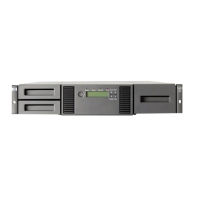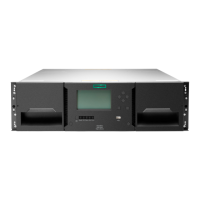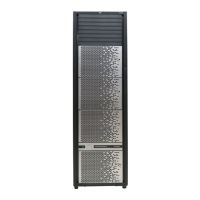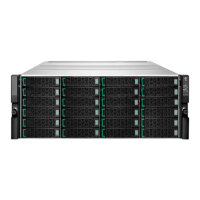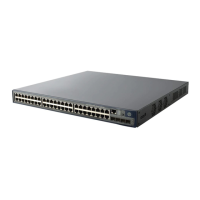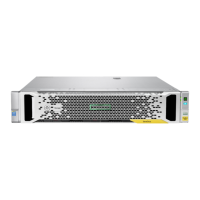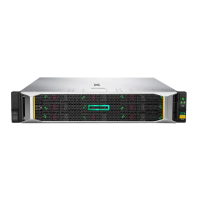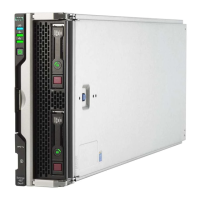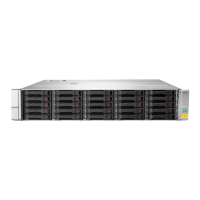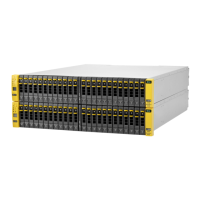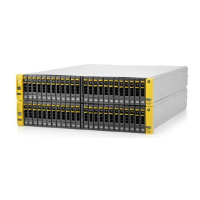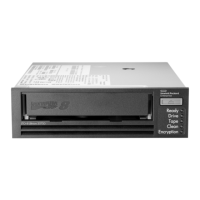Host system requirements 23
4 Connecting hosts
Host system requirements
Data hosts connected to HPE MSA 1050 arrays must meet requirements described herein. Depending on your system
configuration, data host operating systems may require that multi-pathing is supported.
If fault-tolerance is required, then multi-pathing software may be required. Host-based multi-path software should be
used in any configuration where two logical paths between the host and any storage volume may exist at the same time.
This would include most configurations where there are multiple connections to the host or multiple connections
between a switch and the storage.
• Use native Microsoft MPIO DSM support with Windows Server 2016 and Windows Server 2012. Use either the
Server Manager or the command-line interface (mpclaim CLI tool) to perform the installation. Refer to the following
web sites for information about using Windows native MPIO DSM:
https://www.support.microsoft.com
https://technet.microsoft.com (search the site for “multipath I/O overview”)
• Use the HPE Multi-path Device Mapper for Linux Software with Linux servers. To download the appropriate device
mapper multi-path enablement kit for your specific enterprise Linux operating system, go to
https://www.hpe.com/storage/spock
.
Connecting the enclosure to data hosts
A host identifies an external port to which the storage system is attached. The external port may be a port in an I/O
adapter (such as an FC HBA) in a server. Cable connections vary depending on configuration. Common cable
configurations are shown in this section. A list of supported configurations is available on the Hewlett Packard Enterprise
site at: https://www.hpe.com/support/msa1050
:
• HPE MSA 1050 Quick Start Instructions
• HPE MSA 1050 Cable Configuration Guide
These documents provide installation details and describe supported direct attach, switch-connect, and storage
expansion configuration options for MSA 1050 products. For specific information about qualified host cabling options,
see “Cable requirements for MSA 1050 enclosures” (page 18).
MSA 1050 Storage host interface protocols
The small form-factor pluggable (SFP transceiver of SFP) connectors used in pre-configured host ports of FC and iSCSI
MSA 1050 models are further described in the subsections below. Also see “MSA 1050 Storage models” (page 8) for more
information concerning use of these host ports.
NOTE: MSA 1050 FC and iSCSI controllers support the optionally-licensed Remote Snap replication feature. Remote
Snap supports FC and iSCSI host interface protocols for replication. Use the SMU or CLI commands to create and view
replication sets.
MSA 1050 SAS models use high-density mini-SAS (Serial Attached SCSI) interface protocol for host connection. These
models do not support Remote Snap replication.
Fibre Channel protocol
The MSA 1050 controller enclosures support two controller modules using the Fibre Channel interface protocol for host
connection. Each controller module provides two host ports designed for use with an FC SFP supporting data rates up to
8 Gb/s. MSA 1050 FC controllers can also be cabled to support the optionally-licensed Remote Snap replication feature
via the FC ports.
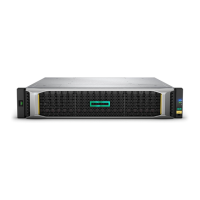
